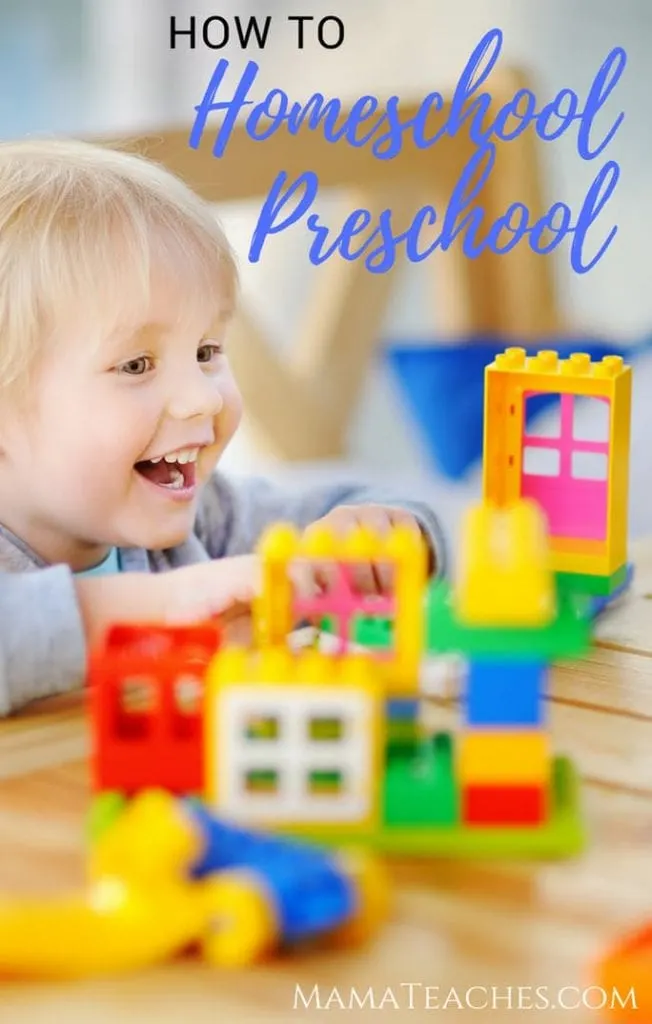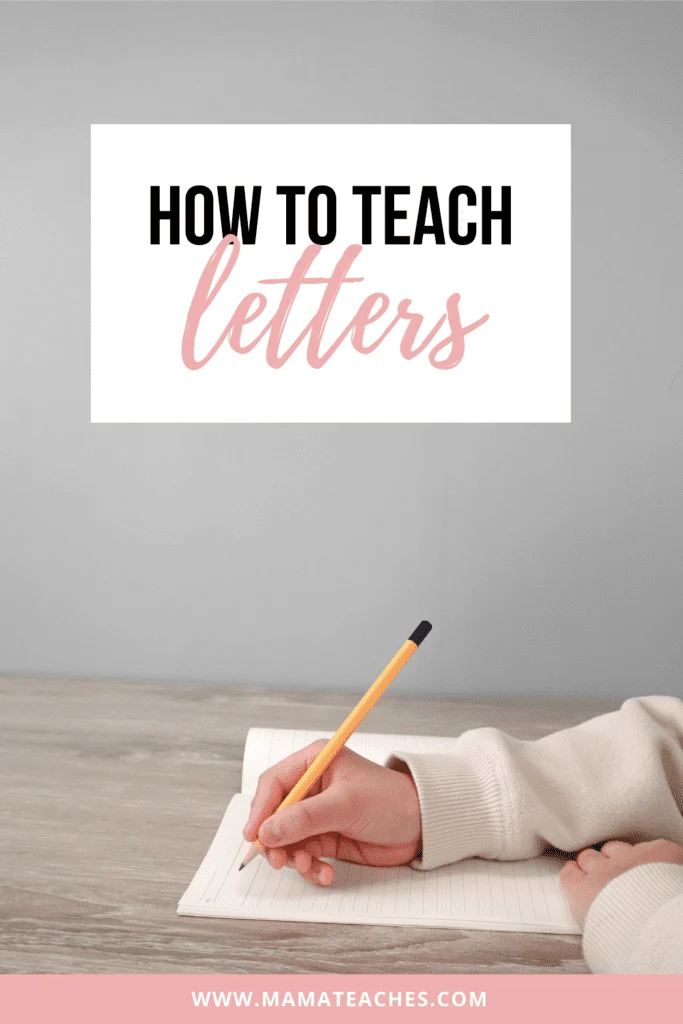Vowels are the mainstay of any language; they are the sounds you sing in words.
If you want to teach a child to read, you need to know how to teach vowels.
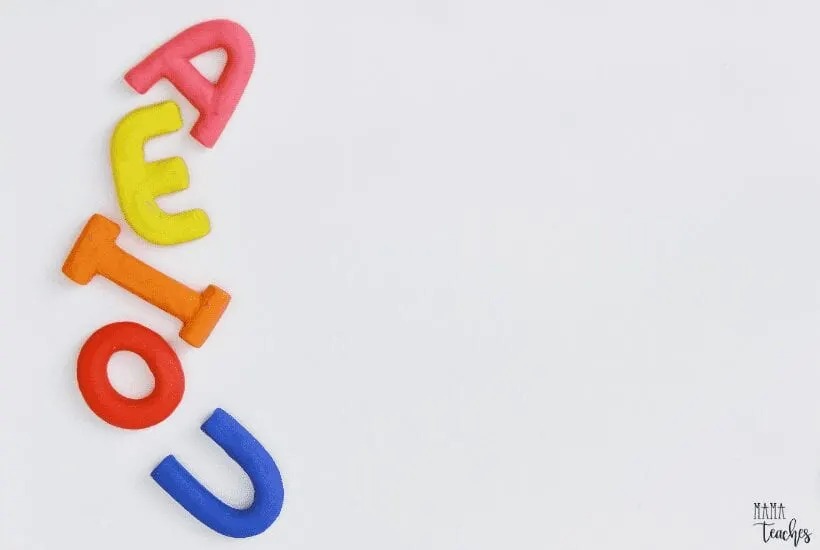
What Are Vowels?
Vowels come from the Latin word vox meaning “voice” because they are the sounds you produce strictly from running air over your vocal cords.
Linguists would say they require no friction–you don’t need to use your tongue, teeth, or lips to produce the sound.
You do need to adjust the shape of your mouth to make different vowel sounds–but more on that later.
You can hardly give your child a linguistic definition and expect her to know her vowels…so where do you start?
Easy! You start with fun and games.
This article contains affiliate links to things that you might like.
How to Teach Vowels: Preschool
Here are some tips and tricks on how to teach vowels to preschoolers.
Start with the Names of the Vowels
One easy way to teach the vowels is by changing the words to “Old MacDonald Had a Farm.” (Don’t worry, Mr. MacDonald is fine with it.)
When you teach this song to your child, skip the random “e, i, e, i, o” and swap it out for the names of the vowels “a, e, i, o, u.”
You can start this very early–and it creates a “memory peg” to make formally learning the vowels much easier later on.
Make the Vowels Visually Distinct
The best way to teach letters is to start with three-dimensional, tactile letters that a child can touch and feel.
Sets that have the vowels in a different color will help your little learner group these special letters together.
Get Leap to Help You Out
I am all for hands-on, parent-child learning, but this 35-minute cartoon is a reading goldmine.
In Letter Factory, Leap the frog and his family travel to a factory where letters are made.
The letters all say their sounds–including the vowels–and your kids can learn the song to memorize them.
I know there are a lot of reading shows on PBS Kids and so forth, but none can touch Letter Factory in terms of helping kids memorize the sounds of the letters.
Put this video on three times a week and watch the magic happen.
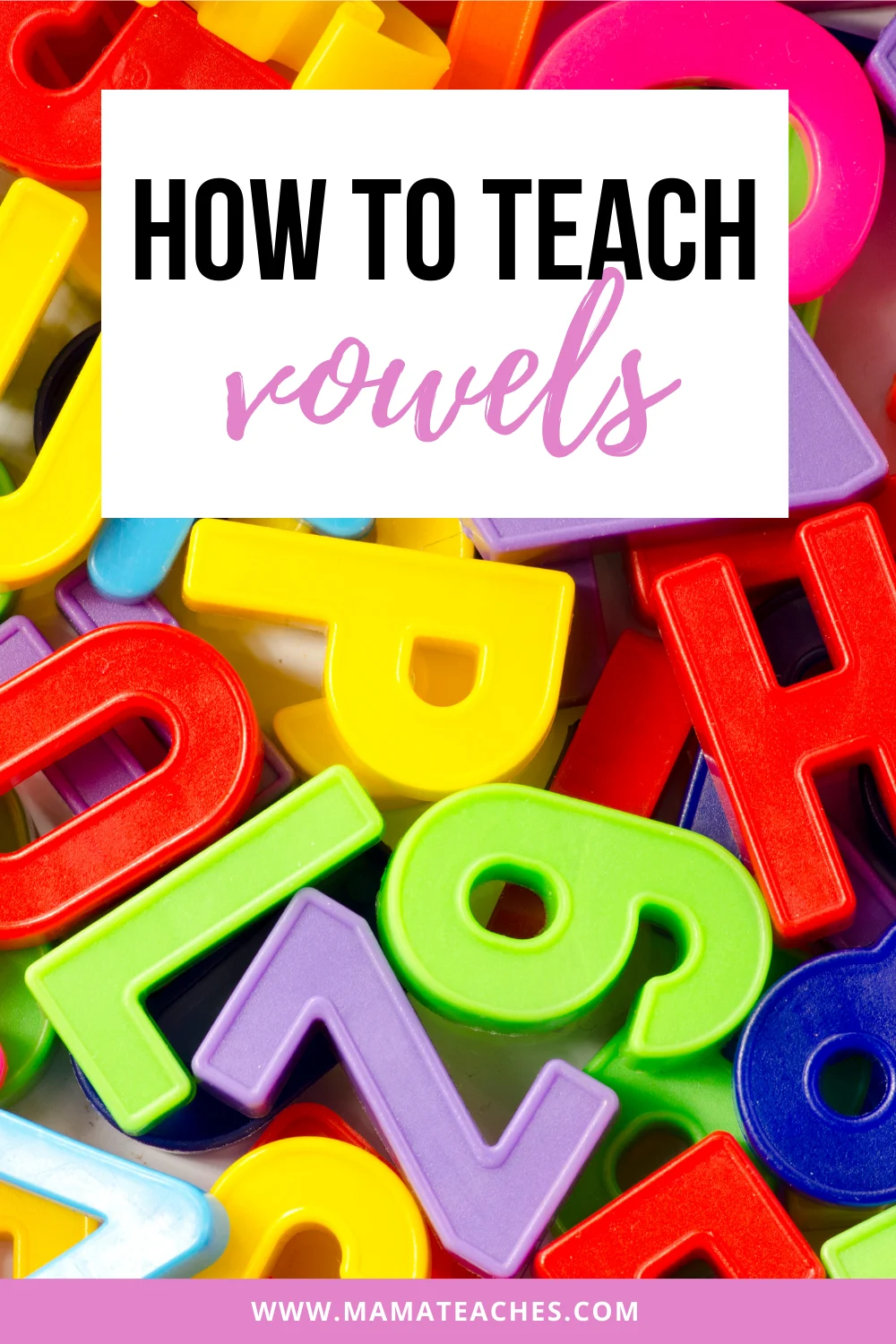
How to Teach Vowels: Kindergarten
When your child is ready to sit and learn to read, you need to know how to teach vowels in a formal way.
At this point, your child should know the names of the vowels.
You may want to teach them as “a, e, i, o, u, and sometimes y,” if your reading program introduces words like my, fly, and by immediately.
Some people like to add “w” to the list of “sometimes vowels” (since it technically acts as a vowel in words like cow), but I say keep it simple and leave it out.
Beginning readers start with C-V-C words (consonant-vowel-consonant words like cat); there is plenty of time to introduce vowel pairs and diphthongs (like /oi/ and /ow/) as they grow in their skills.
Start with the Short Sounds
I like to begin by teaching just the short sounds of the vowels (the sounds in the words cat, met, sip, tot, and cup).
If you are teaching your child phonics (decoding the sounds the letters make), then these short vowel sounds are the ones your child will encounter first in C-V-C words.
Teaching multiple sounds at once is just confusing.
You can easily add the long vowel sounds in later (after all, in the long vowel sounds, each letter just says its name. “A” says its name in late.)
Use a Mirror
Get your child a small hand mirror to observe the shape of his mouth as he says (or sings) the short vowel sounds.
Young children notoriously confuse the short vowel sounds of “e” and “i.”
By using a mirror, you will get your child to focus on how he forms the sounds–and the slight variations he needs to make with his mouth to make the correct sound.
Introduce the Vowels One at a Time
Some reading programs throw your child in the deep end right away, asking them to recall all the vowel sounds at once.
Instead, look for a program that moves incrementally by teaching words together that all have the same vowel sound.
You can also buy supplemental readers that focus predominantly on one vowel sound (like BOB books).
Move on to the Long Sounds
Once your child has mastered short-vowel C-V-C words like Sam, she is ready to learn the long vowels and the magic of the silent “e.”
You can teach this informally using letter tiles or alphabet blocks.
Form the short vowel word (like Sam) and say it.
Then show how when you add a silent “e” to the end of the word, it casts a magic spell that changes the vowel sound to make it long.
Sam becomes same.
Play this “magic trick” with short vowel “a” words again and again (over several days) until your child gets the hang of it.
You can then move on to the other vowels (pet becomes Pete).
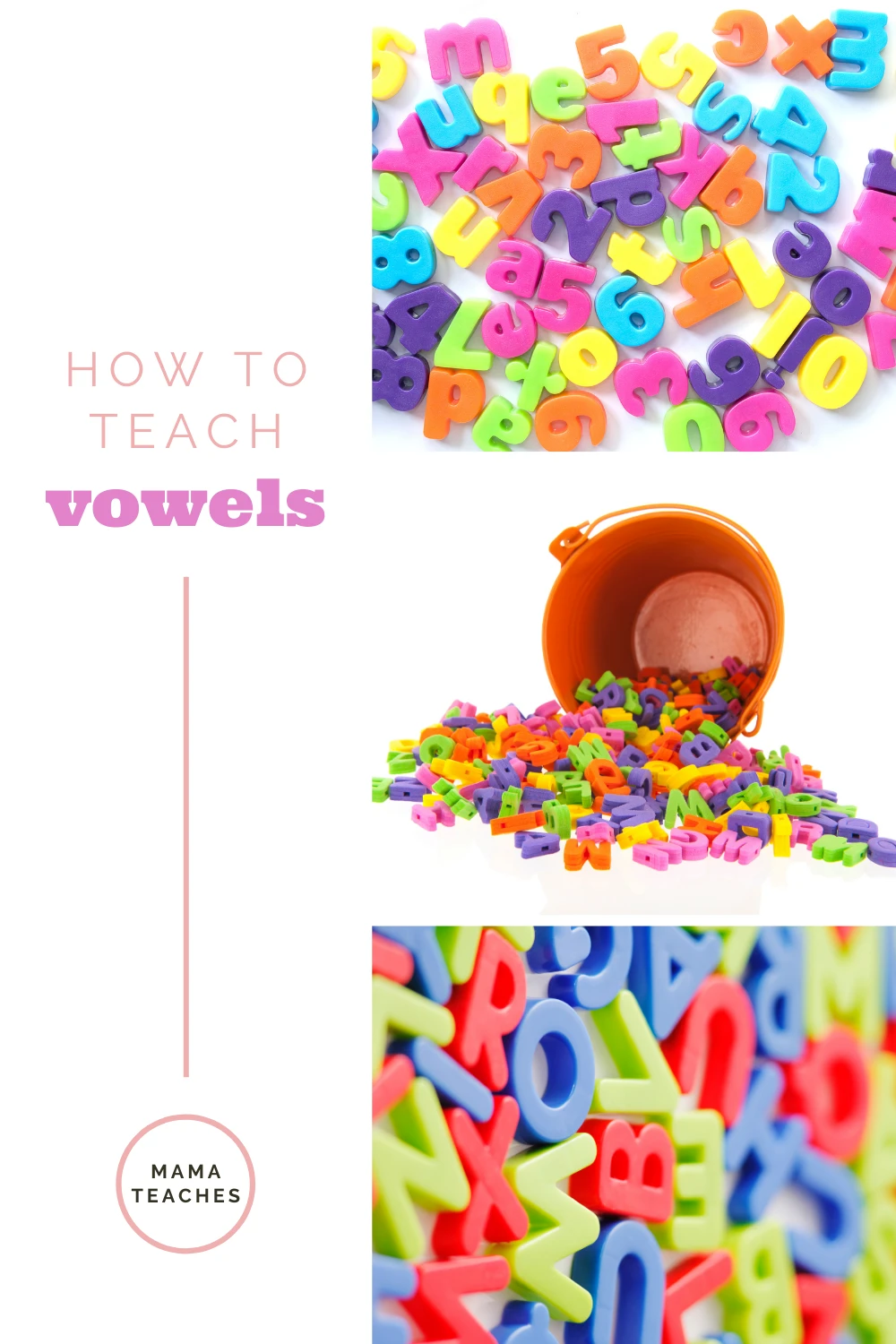
Teaching Vowels
Teaching the vowels is simple as long as you remember to be consistent about it–and keep it fun!
Whether it is letter game play or formal reading time, aim for 5-15 minutes a day.
Soon your little learner will be reading to you!


